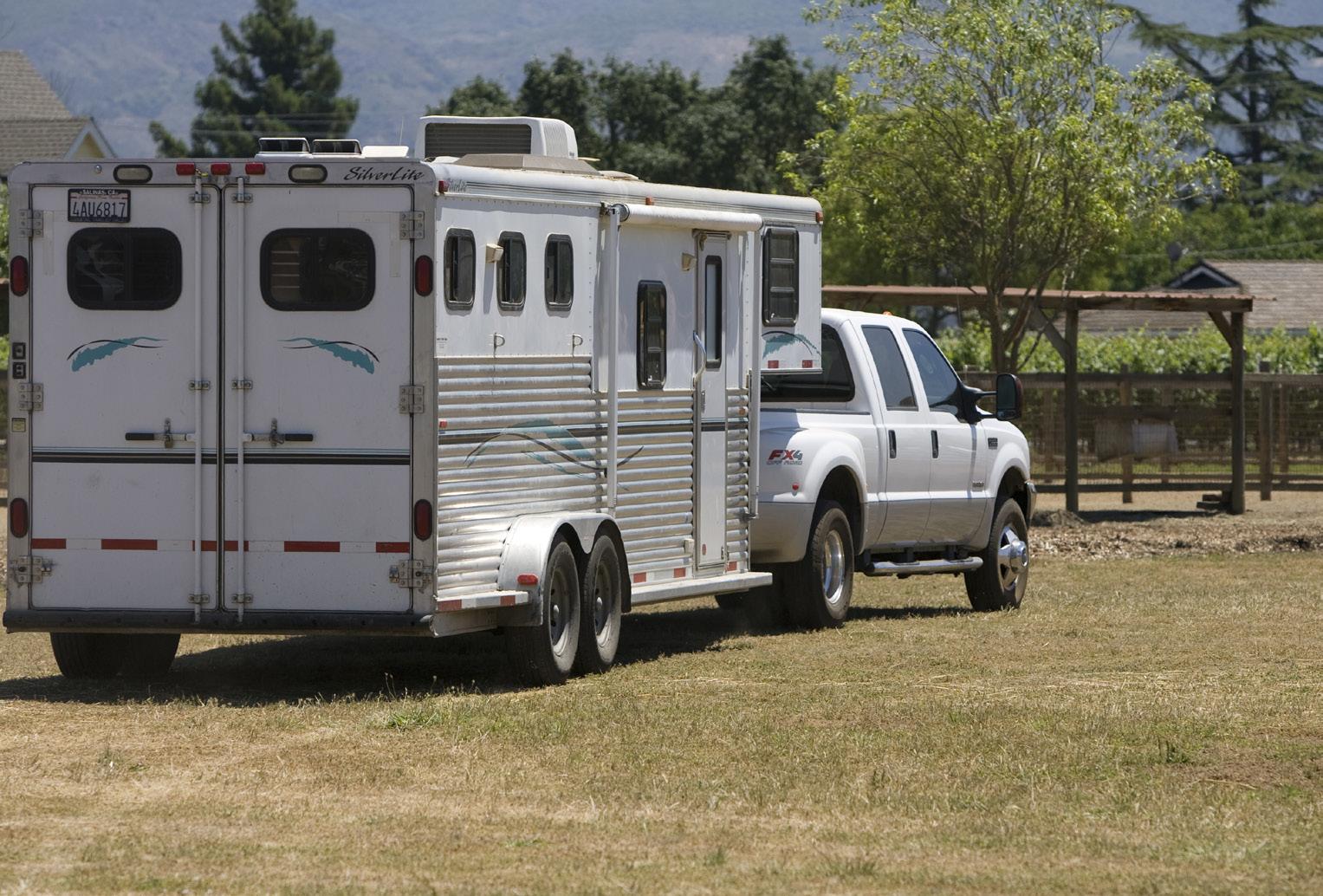
4 minute read
Skill Set
------------ SKILLSET-----------Be a Savvy Hauler
PHOTO BY CLIXPHOTO.COM Take precautions on the road, especially in wintry conditions. Drive at least 5 mph under the speed limit, maintain a good distance behind the vehicle in front of you, and don’t dart into traffic.
PHOTO BY HEIDI MELOCCO Your rig doesn’t have to be new, but it must be in good working condition, and your tow vehicle must be properly rated to tow your trailer and its load. Help keep your horse, yourself, and your passengers safe by being a savvy hauler. This includes investing in a safe truck-and-trailer rig, practicing your towing skills before your trip, and being a safe and careful driver as you haul your horse to your destination.

Your Rig
The foundation of good driving habits is a safe and properly rated rig. Whenever you take your horse out on the road, whether for a short or a long trip, you’re putting yourself and your horse at a certain amount of risk. Your rig doesn’t have to be new, but it must be in good working condition, and your tow vehicle must be properly rated to tow your trailer and its load.
If you’re towing a tag-along (bumper-pull)
trailer, you must have a Class III or Class IV hitch that’s bolted or welded to the frame of your tow vehicle. It must be rated to match or exceed the weight of your trailer. For any type of trailer—tag-along or gooseneck—make sure your trailer is level, the brakes and lights are working properly, the emergency breakaway brake is attached, and the battery is fully charged. Safety chains or cables must be hooked to the tow vehicle. Many states require safety chains or cables for gooseneck trailers, as well.
Pre-Trip Practice
Besides having all the right equipment, what more can you do to improve your chances on the highway, and help you and your horse arrive at your destination safely and in a good frame of mind?
Take a ride in your trailer. (If you have a tag-along, practice on private property with the owner’s permission; it’s illegal to ride in the trailer.) You might be surprised how it feels each time the rig takes a turn or makes a sudden stop. Considerate driving can have a real effect on your horse’s attitude about the trailer. Always think about your passenger, and chances are, he’ll learn to actually enjoy—or least gratefully tolerate—his trailer trips.
If trailering is new to you, practice driving your rig before you load your horse in the trailer. Know how to park and back up before you go out on the road.
Backing isn’t so hard once you know the secret: Put your hand on the bottom of the steering wheel. To turn the back of the trailer to the left, move your hand to the left (turning the steering wheel clockwise). To turn the back of your
PHOTO BY HEIDI MELOCCO If trailering is new to you, practice driving your rig before you load your horse in the trailer.

trailer to the right, move your hand to the right (turning the steering wheel counterclockwise).
To turn your trailer sharply while backing, turn the steering wheel before you move your vehicle. To turn more gradually, turn the steering wheel as your vehicle is moving.
Note: A longer trailer is a bit easier to back than a shorter one. A tag-along trailer with a long tongue is easier to back than a trailer with a short tongue. A shorter trailer jackknives more easily than a longer trailer.
On the Road
On the road, your driving requires special precautions. Loaded horse trailers are heavy. The extra weight strains your tow vehicle and increases stopping distances. You also won’t be able to accelerate quickly. These problems will be emphasized if you’re close to your maximum towing capacity.
Take precautions on the road, especially in wintry conditions. Drive at least 5 mph under the speed limit, maintain a good distance behind the vehicle in front of you, and don’t dart into traffic. Some states have a separate speed limit for those hauling trailers. Don’t let other drivers push you to drive faster. You’re bigger than they are; let them deal with it.
On multi-lane highways, change lanes gradually. Flick on your turn signal well before you change lanes so your intentions are clear to those behind and around you. Use your rearview mirrors.
Keep forward motion and tension on the hitch to help prevent loss of control from trailer sway. If your trailer starts to sway, don’t apply the brakes on your tow vehicle; instead apply, in brief spurts, the hand brake on the controller to the trailer. This slows your trailer behind you while keeping your tow vehicle going forward, which should result in straightening out your rig. Don’t apply the brakes on your tow vehicle until your trailer is under control. —Tom Scheve & Neva Kittrell Scheve, Equisprit.com








